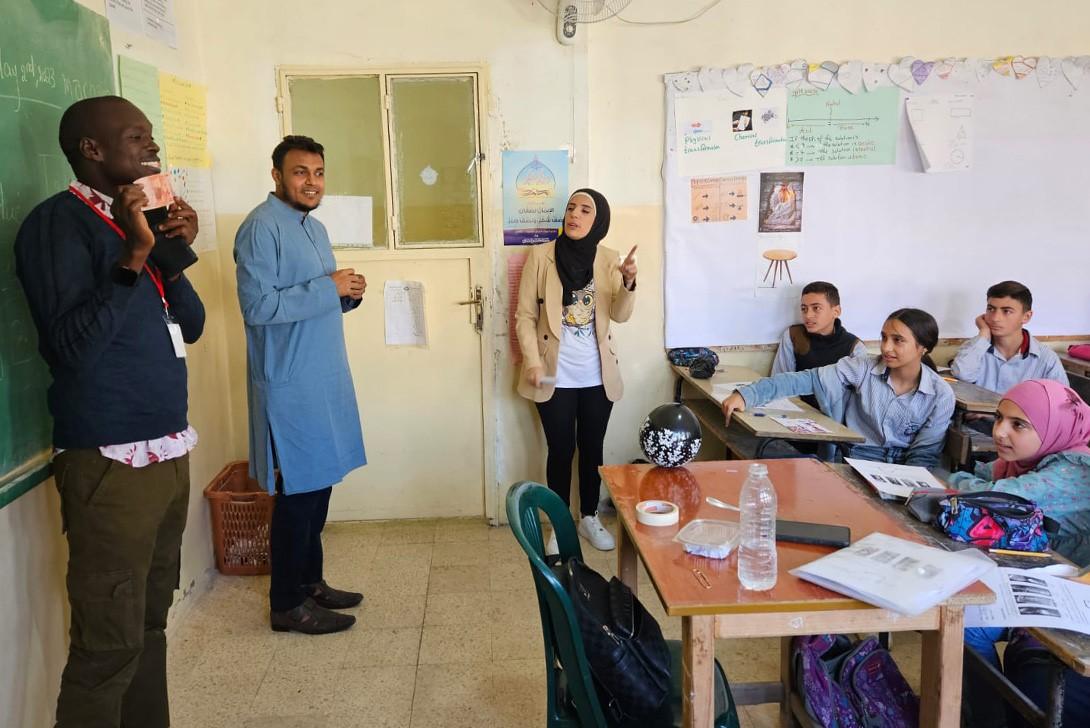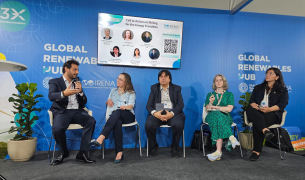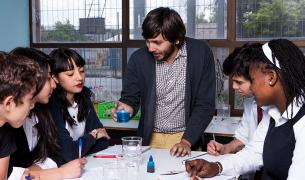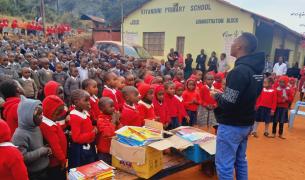Why it is important to recruit teachers and staff with lived experiences in emergency contexts

Recently, I had a rare opportunity to participate in a four-day learning immersion where I and my colleagues from across different Teach For All network partners learnt about different approaches within Education in Emergencies (EiE) contexts around the world. The event was hosted by Teach For Lebanon, and it was amazing to learn from the organization’s resilient staff, fellows and alumni in the face of the adversities affecting their country. It was humbling to hear the voices of refugee students, the reflections of fellows, and the insights from parents as they shared their coping strategies amidst Lebanon’s state of emergency. It was equally captivating to learn about the EiE strategies applied by diverse Teach For All partner organizations, including Teach For Sweden, Teach For Ethiopia, Teach For Bangladesh,Teach For Armenia, Enseña por Colombia, Teach For Italy, Enseña por México, Teach For Ukraine, and Teach For Uganda.
A visit to a school in the periphery of Beirut city where mostly Syrian refugees study provided a moment of self-discovery and a reminder of my experience as a young boy growing up in an armed conflict context in Eastern Uganda. At the time, people in my community and most neighboring communities were forcefully taken to Internally Displaced Peoples (IDP) camps due to the civil war that mostly affected the Eastern and Northern parts of the country. If I can recall, the year could have been 1989 when we were chased by soldiers to the nearby town, which is now a district called Bukedea. We were displaced by the armed conflict that had been raging from the early ‘80s and was worsened by a military coup that led to the change of government in 1986. The year 1988 should have been a perfect time for me to start pre-school but it was never possible within the camp life and insecurity therein, only my older siblings could be allowed by my parents to attend school.
Life within the IDP camps was unimaginable for not just myself but a lot of children. At first, we slept in the verandas and under trees, as public places like schools and health centres were full with other IDPs arriving from different communities. Fortunately, our stay in the cold nights lasted only one week as my dad connected with his friends within town to secure temporary shelter for us and later built a semi-permanent house. However, many children and their families could stay for weeks or even months under verandas and in public places before they could construct makeshift grass thatched houses.
The IDP camps were overcrowded with horrible hygiene conditions and regular outbreaks of diseases that claimed the lives of children, including malaria and cholera, and other illnesses like measles, whooping cough, typhoid, dysentery, and polio, for which there was limited or no access to immunization and other health services. The thatched houses were susceptible to fire outbreaks often caused by hungry children trying to prepare porridge or cook the one meal a day. While in the camps, children witnessed violence of all forms including gender-based violence among parents and sporadic attacks by rebels. Growing up as a child in such a context meant that we had no choice but to witness the horrors of killings, bloodshed, and other traumatic scenes. Gunshots became “normal” as news about highway ambushes and fighting between rebels and soldiers kept children and parents in a tense and uncertain state of mind.
It was not until 1991 when the situation returned to somewhat normalcy and my parents took us back to rebuild our home, which had been destroyed, in our deserted community. But even then, insecurity continued. I could walk the three kilometers to my primary school, but there were incidents of insecurity on the way to school or back home. Some children were kidnapped and recruited into rebellion as child soldiers, while girls and women were sometimes raped or taken as wives to the men in combat. My dad, being a local council chairperson, survived at least three assassination attempts. The night of one of those attempts, I witnessed how he was tortured, fire lit around his neck. Our home was set on fire, and to date one of my sisters has scars from a bullet wound in her hand. Within the community, even short journeys to water sources, or spending time in the gardens cultivating and fetching firewood, could be risky for not only children but adults as well.
While I missed my early childhood years of schooling In the IDP camps, I managed to complete basic, ordinary, and advanced levels of education. The beginning was tough, but I developed a passion to study and ranked high in my class. When my dad passed away while I was still in primary school, my extended family became part of the support system for my secondary and university education.
My lived realities during the emergency I experienced made me curious to learn how other students cope in such fragile contexts, and motivated me to do an undergraduate dissertation on the research topic “Coping mechanisms of children in areas of armed conflict, a case study of Katakwi District in Eastern Uganda.” My own experience further inspired me to pursue opportunities to work on child protection initiatives, and later in early childhood care and education, child-led peace building programs, the development of interventions for young people, and currently education programs.
Based on my personal experience, I believe that it is important for network partners working in EiE to recruit fellows, volunteers, and staff with lived experience in emergency contexts. Their perspectives provide a program design lens that integrates education in emergency interventions, and their personal stories will not only motivate but challenge those who have not had exposure to such contexts. Ultimately, recruiting those with lived experiences of emergency situations can be a catalyst for scaling efforts to improve the learning outcomes of students in emergency-affected areas.
I want to make a passionate call to Teach For All network partners to prioritize scaling interventions for refugees, immigrants, and asylum seekers within your local policy contexts and advocate for policy shifts that promote their wellbeing and dignity. Their teachers can then go on a journey to become the support system for the refugee and host community children who have been exposed to some, if not all, of the challenges that I have gone through in pursuing education under such odd, and often unimaginable, circumstances.



